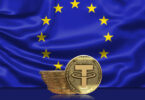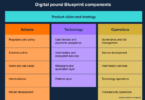Today the European Central Bank published a report on new digital payment methods as part of its preparation for potentially issuing a central bank digital currency (CBDC), the digital Euro. ECB Director Fabio Panetta also shared some hints about the central bank’s current thinking on the digital Euro.
The central bank announced a two-year CBDC research project in July 2021. Today’s report was based on focus group interviews with more than 2,000 members of the general public and much smaller numbers of tech-savvy participants, merchants and the underbanked.
A key takeaway is that any new payment method has to offer “compelling advantages” over current options. This was reinforced by the finding that few members of the general public or the tech-savvy group have recently sought new payment methods.
Users also desire a one-stop solution rather than carrying around multiple cards. Convenience trumps all. Functionality, especially ease of use, being secure, reliable and fast are more important than who provides the payment solution. However, banks were preferred over bigtech providers.
Perhaps unsurprisingly, most participants didn’t appreciate the difference between riskless central bank versus commercial bank money. Many voiced a desire to retain physical cash, often out of concern for others, such as the elderly.
Privacy & the ECB’s current thinking
On the topic of privacy, many interviewees said they don’t consider the subject when making payments. However, many were keen on the ability to adjust the privacy option in particular payment situations.
When the ECB did its own public consultation in late 2020, the desire for privacy protection for a digital euro was a major finding. The ECB’s Fabio Panetta ruled out anonymity because of the need for anti-money laundering processed. He stated that digital euro transaction data should not be visible to the Eurosystem or any central entity. But he qualified that with “beyond what is strictly needed to perform its functions.” The baseline privacy level will be the equivalent of what exists with private digital solutions.
However, the ECB is exploring some exceptions with heightened privacy, such as for offline use instore for payments up to €200. Panetta compared this to a €200 banknote. There would be an upper limit on balances and private offline payment amounts to balance any risks.
Use case priorities
Panetta also clarified the ECB’s thinking about digital euro use cases. He noted that physical instore payments amounted to 40 billion transactions in 2019. “So far, they have been dominated by non-European providers and technologies,” he said. That’s a point that the ECB has mentioned on several occasions. When the ECB created its Markets Advisory Group, the absence of Mastercard, Visa and PayPal was notable.
Hence the current use case priorities are e-commerce payments, physical store payments and person-to-person payments. Transactions between individuals and governments will also be considered. We note that B2B payments are missing from this list. Although arguably, SEPA does this pretty well.
The ECB plans to accelerate its discussions with stakeholders and conduct further focus groups later this year to get feedback on the more detailed plans for the user experience.






